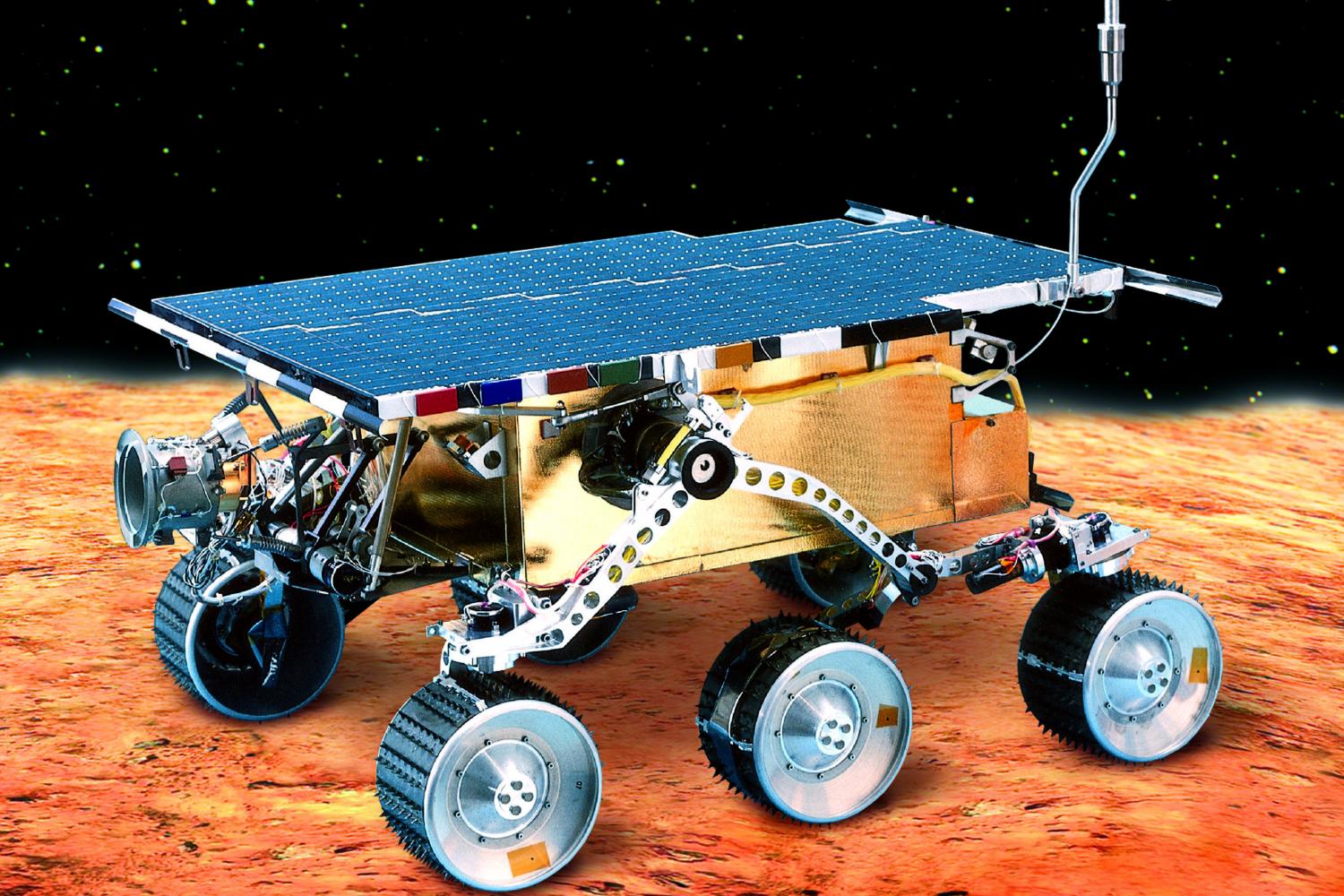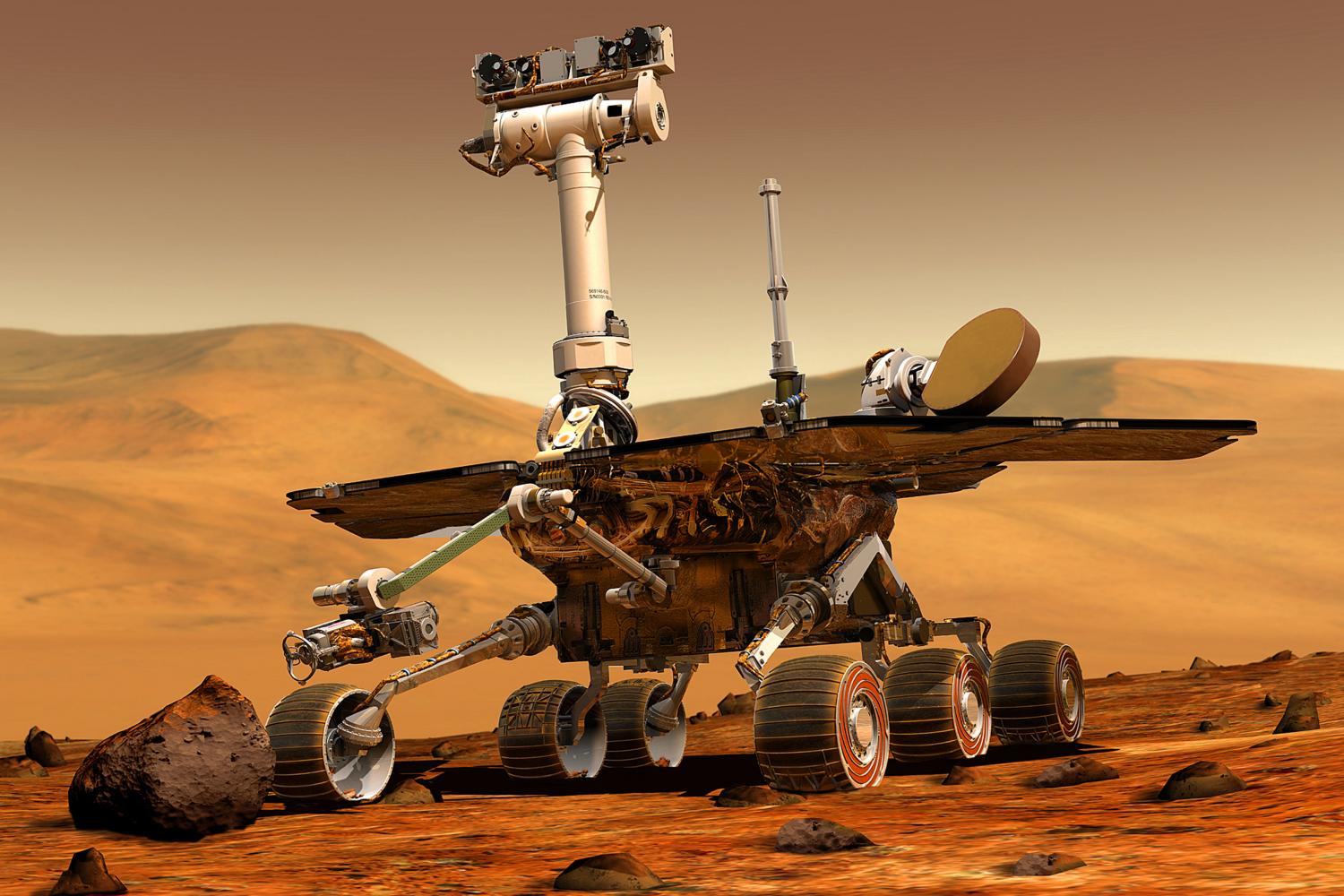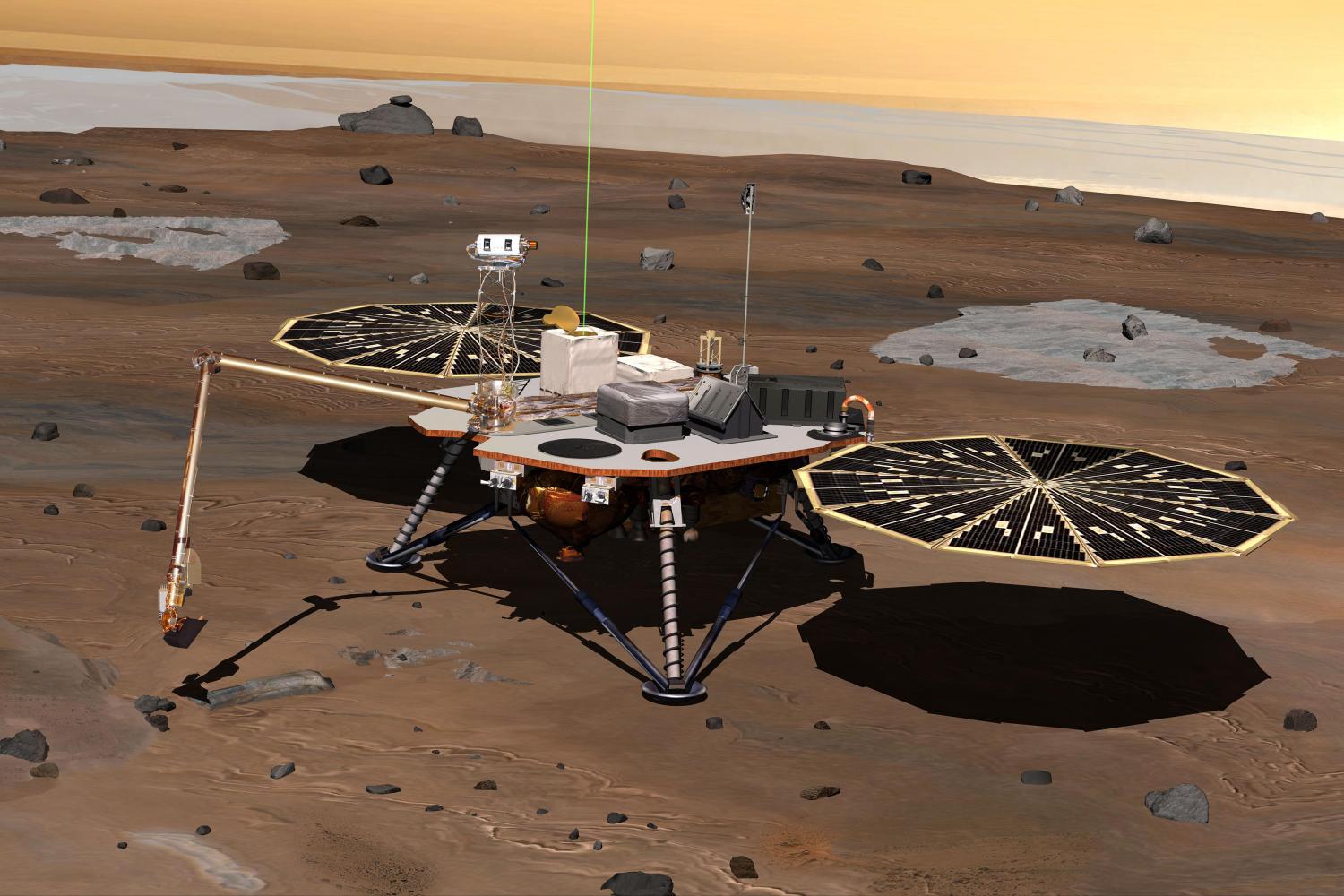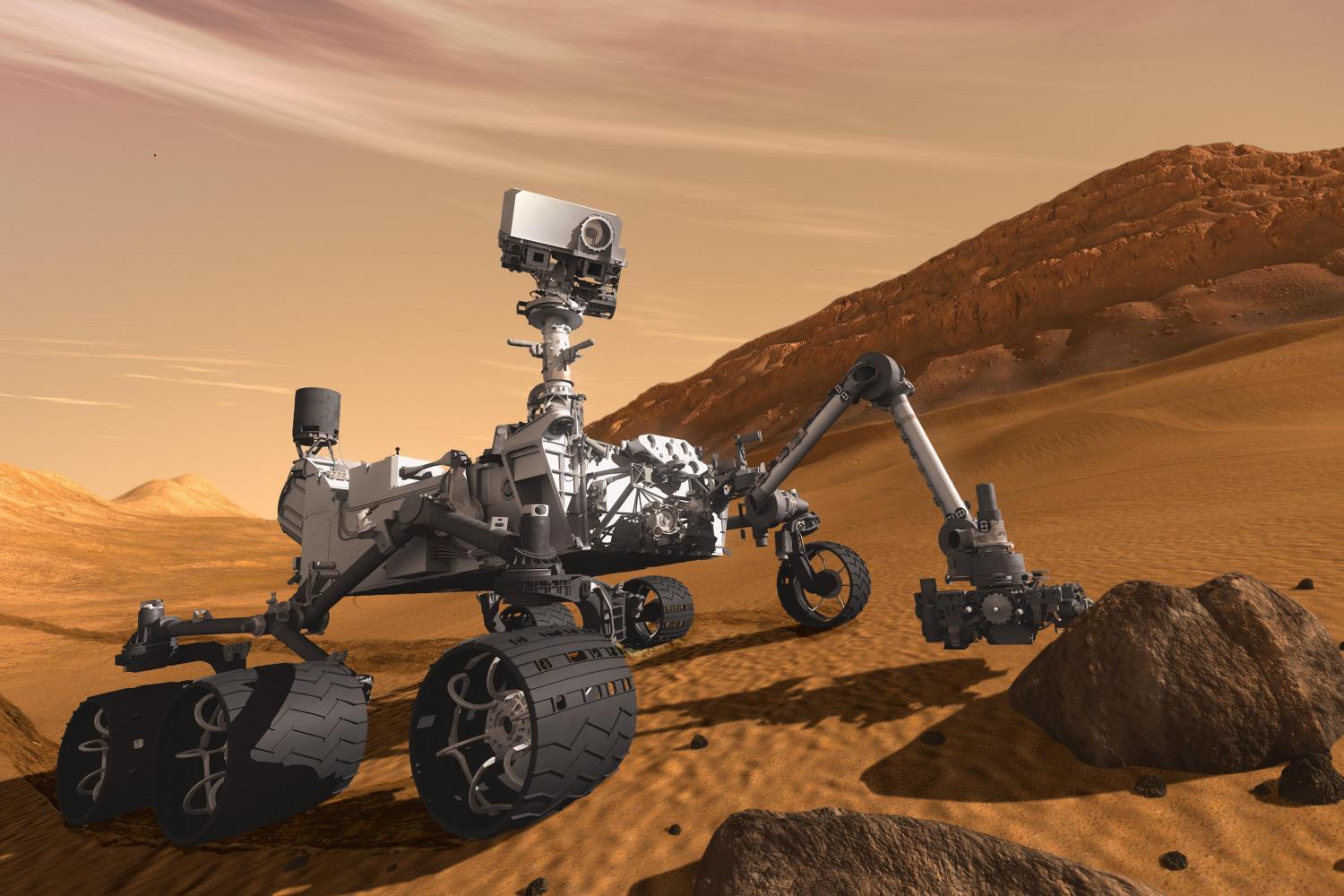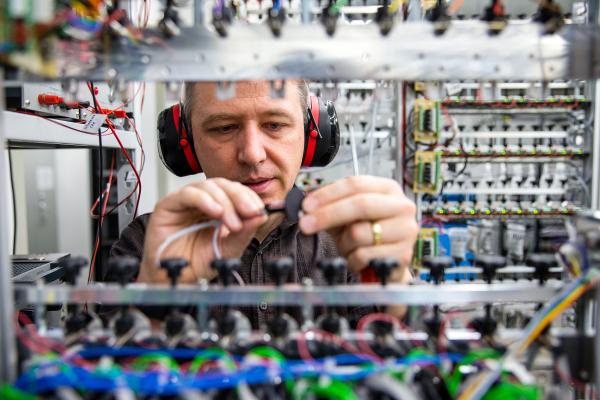A hundred years ago, many people believed that there was a civilization on Mars. Today we know better. Nevertheless: It is quite possible that there was once life on Mars. In the early days of the planet, more than three billion years ago, the environmental conditions were not as harsh as they are today. They were similar to conditions on Earth, where micro-organisms already existed. Even today, the possibility of undiscovered life forms on Mars cannot be ruled out. Below the surface or in the ice of the polar caps, bacteria would be protected against the radiation of space and the large temperature fluctuations. Why not?
Perhaps we will know more, when the rover of the European Space Agency (ESA) lands on Mars in January 2023. This rover, which is part of the ExoMars mission, will look for traces of existing or extinct life. It is equipped for this task with a drill that can reach a depth of two meters below the surface to take samples. These are broken down inside the vehicle and are analyzed chemically and biologically for traces of life. The rover is more advanced than its predecessors from NASA, which were used primarily to search for water.
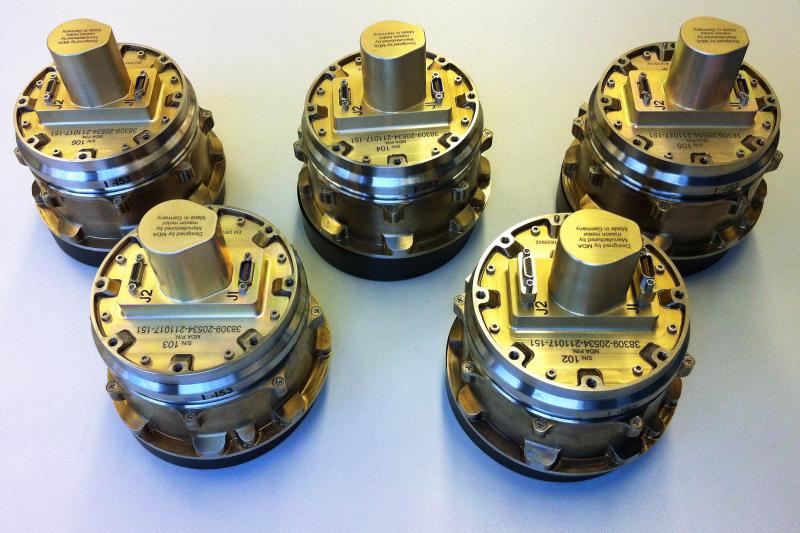
The motor modules for the ExoMars rover.
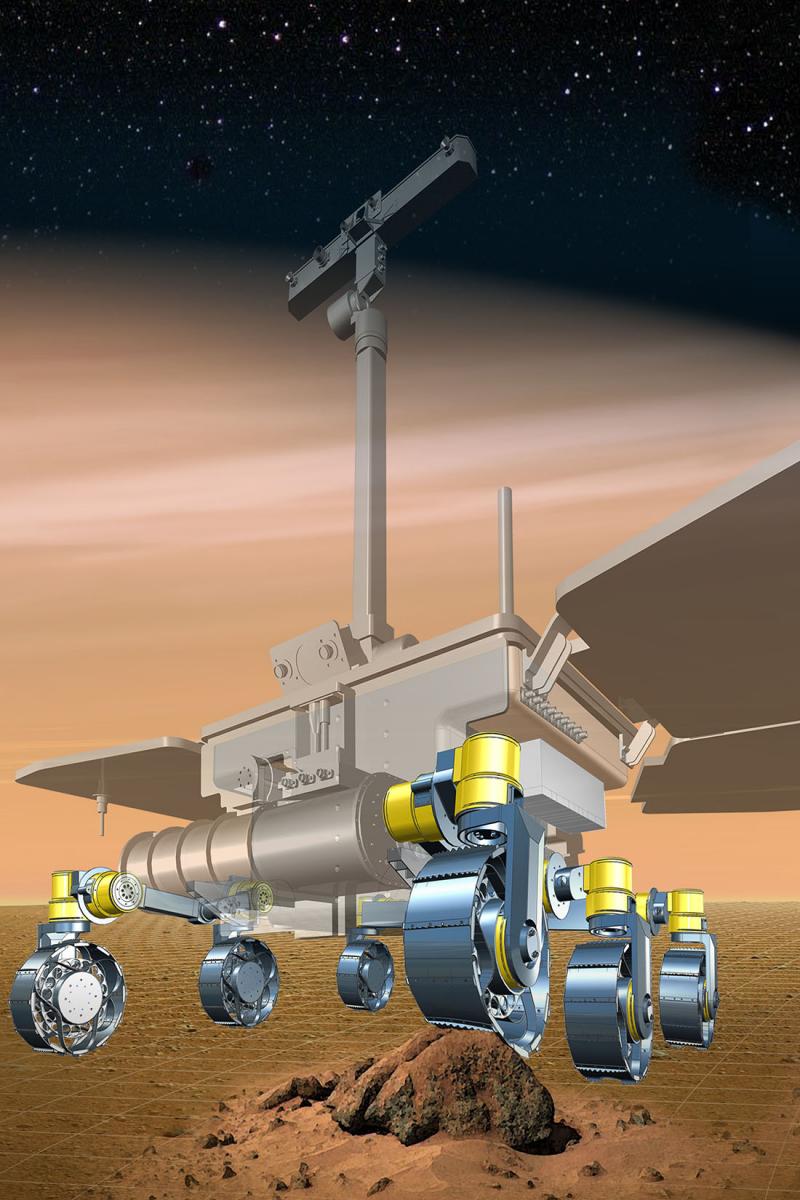
The ExoMars rover with the motor modules highlighted.
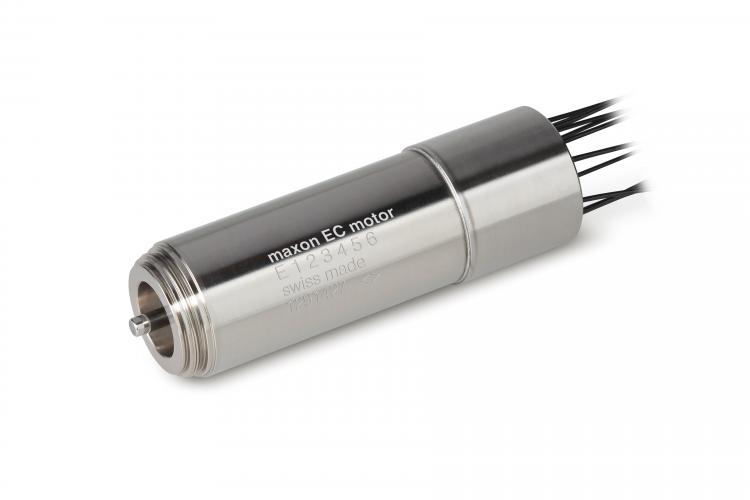
Great leaps in technology
The trip to Mars remains a technological challenge. Devices have to withstand massive temperature fluctuations, cosmic radiation and huge dust storms while still working perfectly. Nothing of this is entirely new for maxon. After providing drives for the first three Mars rovers for the U.S. space agency NASA – Sojourner, Spirit and Opportunity – the Swiss company has extensive experience with meeting these demands. Nevertheless the European project will not be an easy ride, as Robin Phillips, head of SpaceLab at maxon, explains: “There has been significant technical development since the last rovers.” Additionally, this is the first time that maxon is supplying entire drive modules, consisting of a DCX motor, gearhead, encoder and brake, all fit into a compact housing. Eighteen of these modules are installed in the vehicle chassis, where they drive and control the six wheels individually. Another new factor is that maxon is handling all drive tests, thus reducing the workload for the customer. Robin Phillips says: “In recent years, maxon has made great progress and obtained important know-how. Today, we are capable of handling such a challenge and playing an even more important part in a Mars mission.”
The Canadian company MDA is responsible for the chassis and has set stringent requirements regarding the weight, torque and speed of the motors. After all, the rover has to overcome obstacles up to 25 cm high and inclines of 26 degrees. It will be able to move sideways and even walk, moving its legs like a spider. No rover in the past has had even remotely comparable mobility. “It is really magical to participate in scientific projects such as this,” says Ryan McCoubrey, senior rover engineer at MDA. He is happy to have found a good partner in maxon. “They are world-renowned for their precision motors and have valuable experience from the NASA missions, whereas we contribute our knowledge of flight systems and process management. Together, we are a very strong and effective team.”
Brushless motors are flying to Mars
maxon has been an official participant of the ExoMars mission since 2011, but the first developments started several years earlier. Today around 60 employees are involved, more than in any other aerospace project. After all, maxon is not supplying only motors for the rover's wheels. 16 different combinations of motors, gearheads and encoders are used –, for example in the analysis instruments and the drill unit.
The latter is being developed, tested and supplied by Selex ES, a company of the Finmeccanica group. It is a great challenge for the engineers, says Francesco Rizzi: “It is very difficult to develop a drill unit that is capable of coping with all imaginable known and unknown types of rock.” The drill has to function perfectly on Mars and but simultaneously meet very strict limits regarding its size, dimensions and power consumption. The whole package must weigh less than 21 kg and use less than 80 W. The motors also have to be particularly light, efficient and powerful. That is why brushless EC motors by maxon will be used on Mars; they will drive the drill head. These motors have the necessary power and long service life to fulfill this task. Additional brushed DC motors will be responsible for positioning the drill and taking the samples.
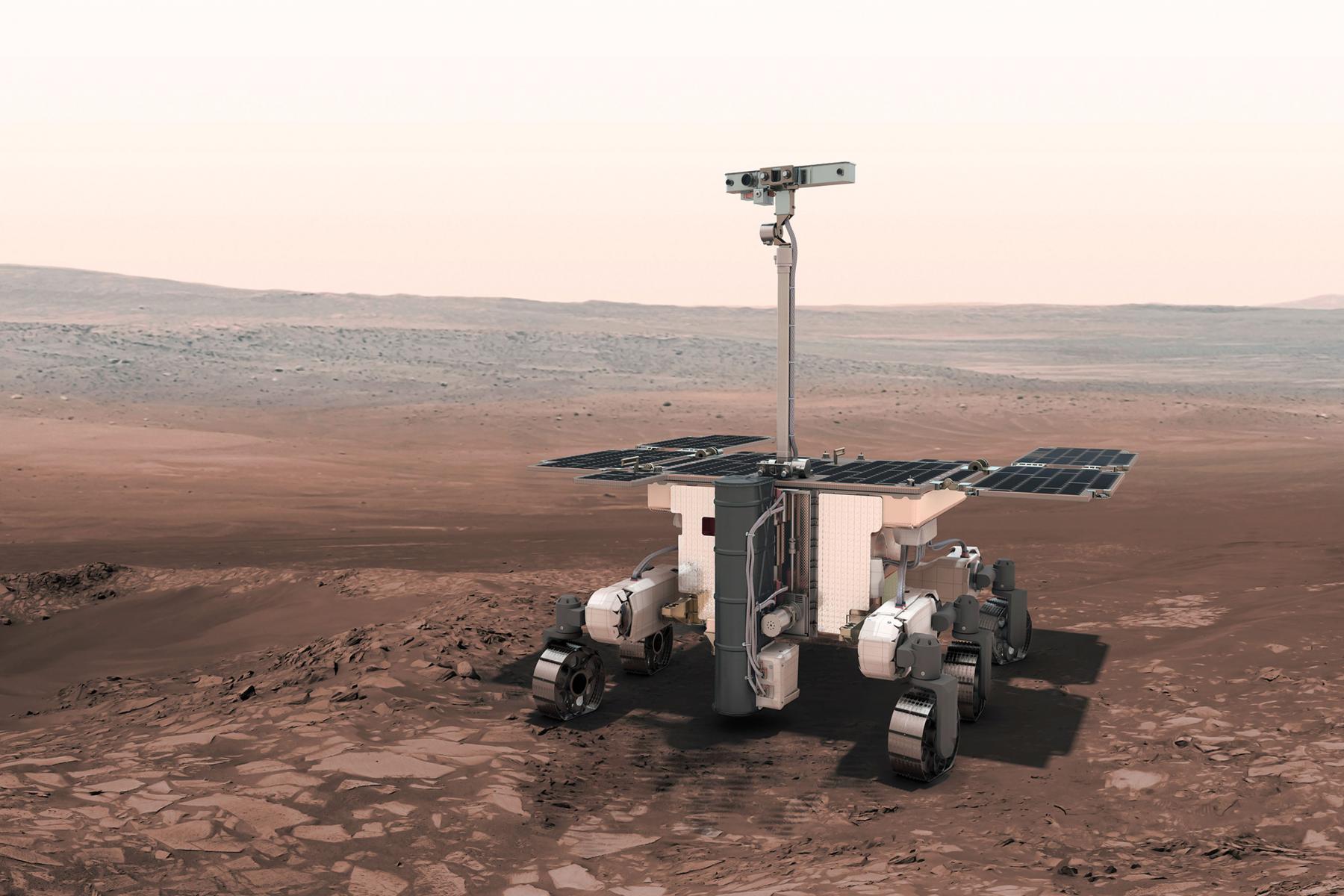
The ExoMars Rover with its maxon motor modules.
Past rover missions to Mars
There have been four rover missions to Mars, all conducted by NASA. All four rovers were equipped with actuators by maxon.
Phoenix
This stationary Mars probe landed on Mars on May 25, 2008, took rock samples from the ground with its robotic arm and analyzed them. It found frozen water. maxon supplied nine brushed motors of type RE 25, with special ball bearings for aligning the solar panels.
Curiosity
This rover landed on Mars in August 2012. It surpassed its predecessors, and not just in terms of technology. It is as big as a small car and is powered by a radionuclide battery. Curiosity analyzed the Mars’ surface and atmosphere. To this end, maxon equipped it with magnetic encoders mounted on the drive axes.
Spirit/Opportunity
The two twin rovers were sent to Mars individually and landed there in January 2004. Spirit collected data for six years; Opportunity is still active and has since discovered traces of water in rock layers. Both rovers were equipped with 35 maxon DC motors - for example for driving the wheels, the control system and the robotic arm.
Sojourner
The first Mars rover landed on July 4, 1997. Service life: three months. For the drives, the steering, and the scientific devices, maxon supplied eleven DC motors, 16 mm in diameter.


